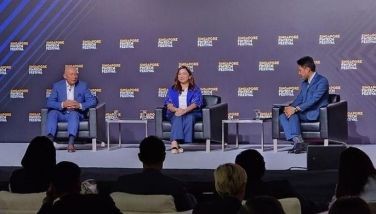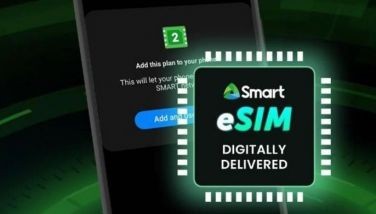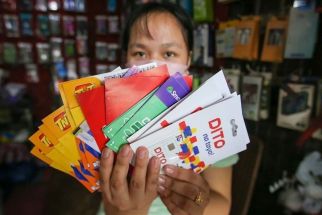Wireless service for the blind wins P1 M at Smart Awards
MANILA, Philippines - Visually impaired individuals or the blind are the intended beneficiaries of a wireless application designed by the champion team from the Mapua Institute of Technology in this year’s 8th SWEEP Innovation and Excellence Awards of Smart Communications Inc.
This year’s challenge was to create applications based on the theme “Innovation in the Palm of Your Hand.”
With its app called the “Wearable Obstacle Detection System and Braille Cell Phone for the Blind,” Mapua’s all-girl team bested 142 other contenders and won P500,000 cash prize with an equivalent amount in the form of a grant awarded to their school.
According to team leader Janiena Roxanne Dirain, available text-to-speech message readers in cellphones read out text messages with an English accent, making it difficult to understand messages that are in Tagalog.
The team, composed of Dirain and fellow graduating Computer Engineering students Kristine Emy Matabang and Girly Perando, was inspired to work on the entry after one of them saw a blind masseuse hunched over, holding her cellphone close to her ears. She was listening to a text message and having a hard time understanding it.
To better empower the blind, the Mapua team came up with a device that not only aids in receiving and sending messages on the cellphone, but also provides ease in mobility.
Their device includes a standard keypad that serves as the main input of the design. It is used to make calls or send text messages.
Braille cell
A Braille cell, composed of six relays attached to solid wires that correspond to the dots of the Braille character, is used to read and show the message. The buzzer signals incoming messages or calls and indicates if a message has been sent and if the device is at initialization state. The GSM Module in the device controls text messages and calls.
“The device can also serve as a tool to learn the Braille system. When you press a letter in the standard keypad, the corresponding Braille image will pop up in the Braille cell,” volunteers team mentor Ayra Panganiban, the students’ professor in their Design subject.
The obstacle detection system of the device, which can be attached to a cane, consists of a proximity sensor that detects obstructions of up to five meters away. Once the sensor is able to detect something, it vibrates. The faster the vibration means the closer the object.
“It was a group effort, from project conceptualization to the design and programming of our device. All three of us were involved from start to finish,” shares Dirain.
 PLDT and Smart president and CEO Napoleon Nazareno shares a light moment with the Mapua team as he tests the obstacle detection device attached to the cane.
PLDT and Smart president and CEO Napoleon Nazareno shares a light moment with the Mapua team as he tests the obstacle detection device attached to the cane. A prototype of the Wearable Obstacle Detection System and Braille Cell Phone for the Blind and those of nine other finalists were evaluated as part of the final judging. These were on exhibit during the 8th SWEEEP Awards culminating activity held at the SMX Convention Center recently.
“The entry of Mapua has social impact as well as great potential for implementation not just here but worldwide,” says Jojo Flores, co-founder and vice president for operations of the Plug and Play Tech Center, who served as this year’s chairman of the board of judges.
QR Codes
“Smart E-mobilized” by Notre Dame of Marbel University was awarded second honors with P300,000 cash prize and an equivalent amount in school grant.
The application proposes the use of QR Codes on mobile phones that can be swiped in scanners set up at MRT and LRT stations. The scanned data are sent to a central server which store it in a database. Information includes the user ID and entry point details (station location and time). Fare is automatically deducted from the user’s Smart Money account linked to the application.
Its main purpose is to help minimize the time and effort commuters spend in buying tickets at MRT and LRT stations.
Water app
“Aquamarine Solution to Salinity and Oxygen Using Wireless Technology” by Bataan Peninsula State University bagged the third place with P150,000 in cash prize and an equivalent amount in school grant.
Designed to help prevent more incidents of fish mortality, this project makes use of sensors installed in the body of water to remotely measure and regulate the salinity and dissolved oxygen level in fishponds.
The system notifies end-users of the gathered data via e-mail, Facebook and SMS. At the same time, it applies the necessary action to restore the ideal level of salinity and dissolved oxygen as may be required. Its end objective is to pave the way for sustainable food production.
Since 2004, Smart has been holding the SWEEP Awards to promote a culture of innovation and excellence in wireless applications development among partner schools under the Smart Wireless Engineering Education Program, an industry-academe partnership that seeks to raise the level of technology and engineering education in the country.
- Latest






























